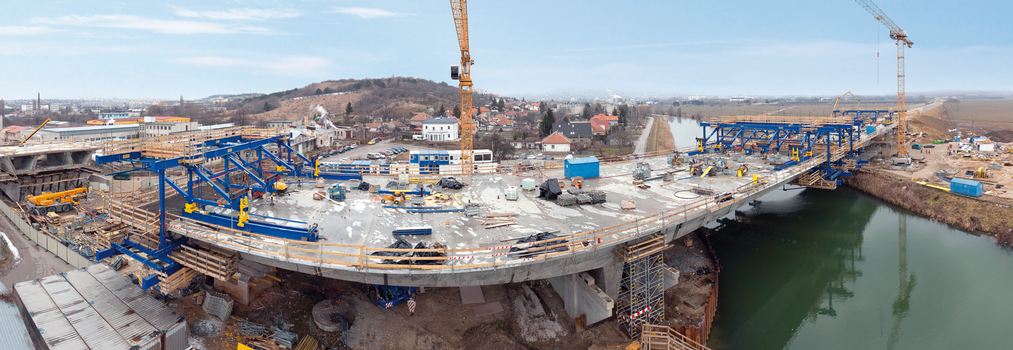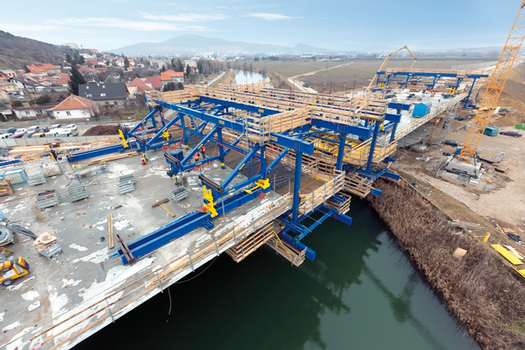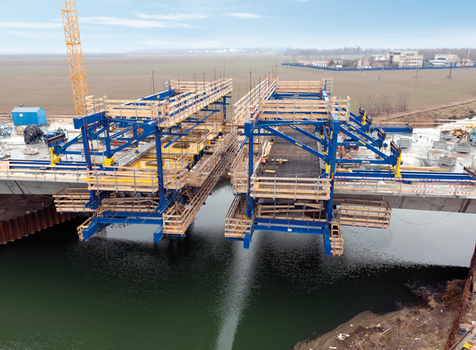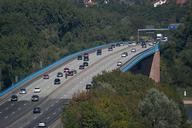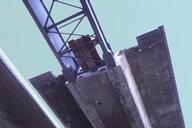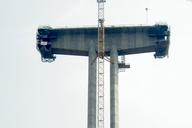Smooth progress on site despite extreme superstructure dimensions
Doka cantilever forming traveller scores top marks for high adaptability and short cycle times on a huge bridge superstructure in Nitra, Slovakia.
Media
The 52 km long extension to the R1 dual carriageway between the towns of Nitra and Banská Bystrica is one of the most extensive infrastructure projects currently underway in Slovakia, and is being implemented as a private-public partnership. To close one of the last gaps in the new road in the Nitra-Selenec section, a 1165 m long bridge structure was built using a combination of incremental launching and cantilevering methods. On the strength of its very positive experience on previous projects, Hungarian bridge-building specialist A-Híd Építő decided to field high-performance Doka cantilever forming travellers (CFT). The extensive advisory and planning services offered by Doka, including verifiable structural calculations, and the high standard of – CE-certified – safety were further factors that swayed the decision in favour of working with Doka once again. "All of us at A-Híd Építő Zrt. were highly impressed by the technology of the Doka cantilever forming traveller. The cyclic operations all went smoothly and fast. In fact, working with it was not at all complicated! After concreting, the tensioning operations took only one day, and then the CFT never took more than one day to cycle,” points out Supervisor András Gyalog.
Special solutions for high loads
Due to the extremely wide superstructure deck (26 m), the Doka bridge specialists designed the cantilever forming travellers (CFT), with four longitudinal trusses, from the standard range of hire components. The modular design concept of the CFT means that it can be adapted cost-efficiently using such components, even when unusual superstructure cross-sections are involved. The specially developed tie-rod cross-girder ensures maximum flexibility here. Tie-rods can be positioned as required on a tightly spaced grid anywhere along the entire length of the cross-girder, enabling them to be perfectly tailored to the bending moment. What is more, the unusually large cross-section meant much higher concrete loads, which also had to be allowed for when designing this CFT. In the first of the 50 concrete pours, the superstructure segments weighed a colossal 310 t. Even though the CFTs weighed 140 t apiece, the use of newly developed drive components – designed for maximized power and performance – allowed them to be moved smoothly from one pour to the next on the two outer longitudinal trusses. This made it possible to minimize the amount of equipment needed and ensure rapid cycling, despite the large effective width. To keep deformation of the bottom grid to a minimum during travel, this was reinforced with a standardized under-girder support.
Efficient forming of complex cross-section
The design of the inner formwork not only had to allow for a continuous reduction in the depth of the superstructure deck, but also for a significant narrowing in the internal widths of the box-girder walls. To allow the modifications needed in every pour to be accomplished as efficiently as possible, Top 50 large-area formwork was mounted on movable custom sections here, enabling it to be adjusted quickly, accurately and easily with heavy-duty screw jacks.
Maximum safety and fast cycle times
On this technically demanding project, the Doka CFTs were a convincing solution in terms of safety as well, with features such as permanent self-locking to prevent unwanted travel, safe access to all working levels via integrated steps and full safety barriers around all working platforms. As well as instructing the site crew in how to handle the formwork equipment correctly, an experienced Formwork Instructor from Magyar Doka was on hand to assist with erection of the CFTs on the pier heads and with the first travelling operation. This ensured safe, smooth forming operations right from the very first concrete pour. Despite the fact that this project called for much more extensive reinforcing, forming and concreting works than would have been the case on a conventional superstructure, the Doka CFT enabled the well-versed site crew from A-Híd Építő to achieve an impressive eight-day cycle. "Construction progress was very successful. The plan was 10 days per section. The best result was 7 days per section and the average was 8 days per section. Furthermore, pre-assembly took only 10 days so Doka’s cantilever forming traveller definitely saved us a lot of time,” notes Supervisor András Gyalog, expressing his great satisfaction at the speed of work on site.
Structure Types
- About this
data sheet - Product-ID
6269 - Published on:
15/05/2013 - Last updated on:
30/01/2016

